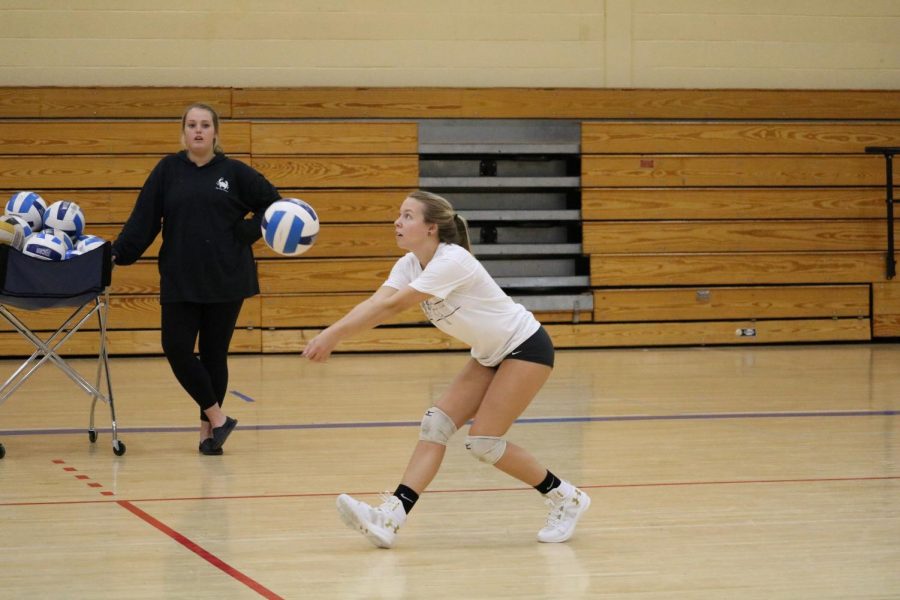Players on more than 1 team span fall, spring
Sylvia Frye, a first-year ultrasound technician student, plays volleyball in the fall and softball in the spring. She is one of three Riverhawks who play dual sports.
November 8, 2018
Three AACC Riverhawks who are playing fall sports this semester will switch teams in the spring.
Second-year transfer studies student Ryan Owens, a Men’s Soccer defensive player, will be a goalie for Men’s Lacrosse next semester. Two members of next semester’s Softball team, Sylvia Frye, a first-year ultrasound technician student, and Randal Graham, a second-year health, fitness and exercise studies student, play on this fall’s Volleyball and Women’s Soccer teams, respectively.
“When it makes sense we certainly encourage them to” play more than one sport, Athletics Director Duane Herr said. “Even high school coaches are encouraging non-specialization to their athletes to open other opportunities for them.”
Herr said year-round athletes tend to be academically motivated. “You have your support system, your teammates that are depending on you to stay eligible,” he said. “You want to make sure you’re successful so you can continue to participate in your second sport.”
Owens said playing two sports has a positive impact on him.
“It has allowed me to stay involved year-round,” said Owens. “Knowing that you have practice or a game later in the day gives you extra motivation to go to school.”
Still, time management can be an issue for dual-sport athletes at the college level.
“Sports can cut into time for schoolwork,” Owens said. “Playing two sports leaves you very tired and cuts into your schoolwork time tremendously. There are definitely times when I have to put school before sports.”
“Time is obviously a huge problem for any two-sport athlete,” AACC Men’s Soccer coach Nick Cosentino said. “But it does help him academically and athletically. That’s what’s great about a community college, because being a dual-sport athlete at a four-year is virtually impossible.”
Frye, who is an outside hitter for Riverhawks Volleyball and a shortstop for Softball, agreed.
“It can be hard to manage school, volleyball and work,” she said. “But I always make school and work my first priorities.”
Blake Rebstock, a second-year criminal justice student who played three sports each year in high school, said he learned time management by necessity. “So, the adjustment to college life went pretty smooth,” he said.
Athletes playing more than one sport are more susceptible to injury because of the stress on their bodies when they practice and play for so many months each year, Herr said.
“If you’re over-training, it very well could be an issue,” Herr said. “Our Softball coach has reached out to our Volleyball and Soccer coaches and said, ‘I’d like to have these couple athletes participate when they can.’ But, obviously the moment we see fatigue or stress, we have to back off.”
“I do worry about overdoing it,” Graham said. “Soccer is big on contact and that’s where I get most of my injuries. A big injury can not only affect soccer but also the other sports I play.”
“Being an athlete, you cannot worry about injuries,” said Rebstock, who plays outfielder on AACC’s Baseball teams in the spring and fall. “You have to prepare your body to the best of your ability to prevent injuries as much as possible.”












